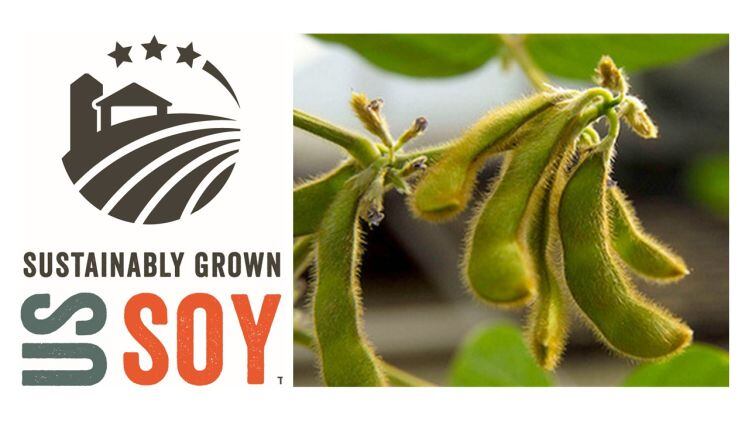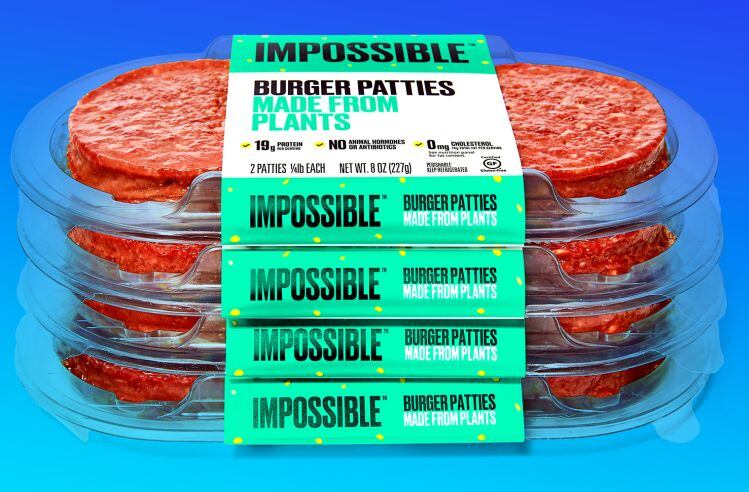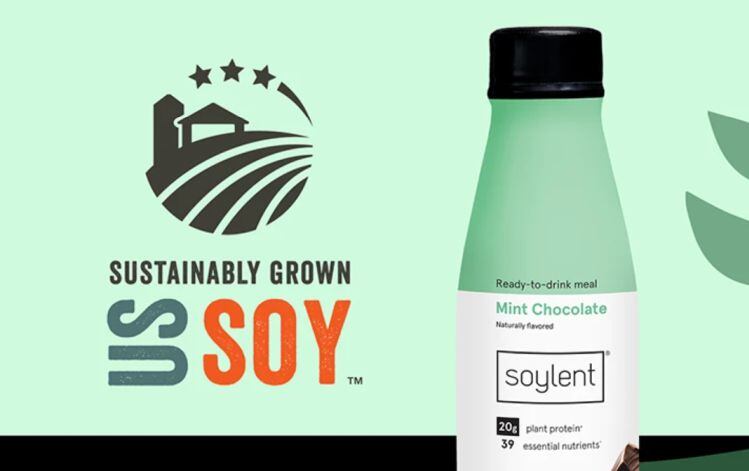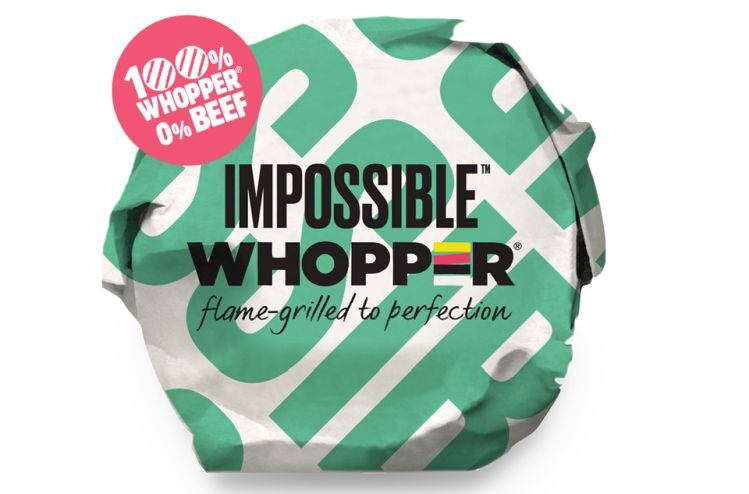Soy protein – which stands out in the plant kingdom as a complete protein - features in some high-profile brands including Impossible Foods and Soylent, and the USB says “studies show that the majority of consumers view soy positively.”
However, it continues to get a bad rap in some parts of the natural products industry owing to the perception of soy as a ‘big food’ crop, anti-GMO sentiment, and debunked health concerns about soy isoflavones.
Some plant-based meat brands also make a virtue of the fact that they use Non GMO crops such as peas rather than soy, while others highlight that they are using non-GMO soybeans (although the USB notes that Non-GMO soybeans also use herbicides, just not glyphosate, while GM soy has helped farmers reduce tillage, protecting soil).
'Research shows that consumers want sustainable, U.S. grown ingredients in their products'
By launching the Sustainably Grown U.S. Soy mark, USB and U.S. Soy “hope to increase awareness of soybeans as a sustainable product for both consumers and CPG companies,” John Jansen, VP Strategic Partnerships at USB, told FoodNavigator-USA.
“According to the USB’s 2020 Consumer study, only 44% of consumers are aware that the soybeans used to make soybean oil and soy foods is a sustainable crop grown by U.S. farmers, which we hope to improve. According to the study, when a product is associated with the Sustainably Grown U.S. Soy mark, nearly 70% of consumers familiar with sustainable farming said they would be more likely to purchase the product.”
He added: “Time and time again, research shows that consumers want sustainable, U.S. grown ingredients in their products.”
The GMO factor
Asked about the GMO factor, he said the mark should not be seen as a ‘Pro-GMO’ mark, noting that: “The mark does not have criteria specific to GM or non-GMO crops and we are able to confirm that the non-GMO soy crops meet the sustainability criteria laid out in the new standard if grown using best management practices. Taking measures to improve soil health will have environmental benefits regardless of the type of seed selected by farmers.”

However, he also noted that “biotechnology is one of many tools that allows farmers to decrease pesticide use, allowing for use of more environmentally friendly herbicides; preserve and improve soil quality through use of conservation tillage and no-till practices; reduce nutrient runoff, increasing crops’ fertilizer efficiency and conserving topsoil; and minimize their agricultural carbon footprint.”
The 2020 USB Food Industry Insights study found that of those who rate soy as ‘neutral’ or ‘unhealthy,’ only 2% cited ‘GMO’ as a reason, “which could indicate that companies should not fear alignment with a GMO crop,” claimed Jansen.
'Roughly 41% of U.S. soybean acreage meets the criteria for the new logo'
The ‘Sustainably Grown US Soy’ mark – which applies to farmers growing GM and Non GM varieties of soy – basically assures consumers that the soy is “grown in the United States; is compliant with all U.S. environmental regulations; protects highly erodible soils and wetlands; and is grown on family farms with responsible labor practices,” he said.
So does this mean that pretty much any soy grown in the US already meets the criteria?
No, stressed Jansen: “The Sustainably Grown U.S. Soy mark currently applies to those soybean acres grown under cover crop (3-4%) or no-till (40%) best practices on-farm.
“Roughly 41% of U.S. soybean acreage already meets the criteria for the new logo, but this does fluctuate each crop year. For instance, cover crop acres equaled 3.9% of all U.S. cropland in 2017.”
He added: “The program is in a pilot phase at this time, and the goal is to evolve to a certification with a third-party auditor. Once the pilot is over, new customers will provide an overview of their supply chain, which will be reviewed by a third-party auditor. The percentage of soy used by end product will be measured and applied against supply standards on a mass balance basis."
What happens next?
The USB will analyze the results of the pilot program - running from Jan 19 to March 19 – “before likely expanding the program and opening it to other interested CPG companies,” said Jansen.
Asked about the benefits for participating brands – and how to measure them - Jansen claimed that Soylent’s customers “have shown great appreciation and support online after the announcement,” adding that, “Beyond direct consumers, retail partners and other stakeholders are also reaching out to Soylent to learn more about this effort.
“This outreach showcases that these types of measures are not only the right thing to do for the planet, but also the right thing to do for business.”
- Read more about the Sustainably Grown U.S. Soy mark HERE.

"Since our founding, sustainability has been core to our mission, our business and our products. We have set out to create products that are as good for the planet as they are for your body. This is why we choose to use soy…
"For years, we have created market-leading products rooted in science and sustainability, so it was important to us to be a part of this pilot.” Read more HERE.
Demir Vangelov, CEO, Soylent (which penned a blog post in 2016 entitled, 'Soylent: Proudly made with GMOs')

Speaking to FoodNavigator-USA after switching its primary protein source from wheat to soy in 2019, Impossible Foods senior manager of impact strategy Rebekah Moses said: “We have done a tremendous amount of diligence and we’re confident that in using GMO soy, we are not taking a step backward in terms of sustainability.
“Soy is really high yielding, it’s a good source of protein and it’s more efficient than wheat. You get so much more protein in a given harvest vs the amounts of water, energy and inputs needed to grow it.”
Asked about the sustainability credentials of GM (herbicide tolerant) soy vs non-GMO (ie. conventional) soy, she said: “Everything is very field-based, but at a high level, there is very little if any difference in the environmental impact of conventional vs herbicide tolerant soy and in some cases using herbicide tolerant soy enables you to adopt more sustainable practices such as the ability to reduce tillage, which is a win for the soil.
“Similarly, the chemicals you spray to manage pests – that includes insects and weeds - in herbicide tolerant crops are lower toxicity than the alternatives [used to grow conventional soy].”
Asked why the company had picked soy - which it sources from farms in Iowa, Minnesota and Illinois - over peas, for example, she said: “Soy is objectively an excellent source of high quality protein that fixes its own nitrogen – although it’s not alone in that – and it has very high yields. But I’d never say one is inherently more sustainable than the other as there are a million different ways of weighing what that means in a specific context.”
She also noted that the deforestation associated with soybeans was due to crops grown for animal feed, adding: “The vast majority of soy is grown for animal feed. No one is cutting down rainforests so we can make tofu or plant-based burgers.”
Asked about glyphosate residues, the company said it monitored its products for 300+ pesticides (including glyphosates) and other contaminants, adding: “Our standards are far more stringent than the standards set by the EPA, USDA and FDA, and orders of magnitude below the levels that would pose any risk for consumers.”



